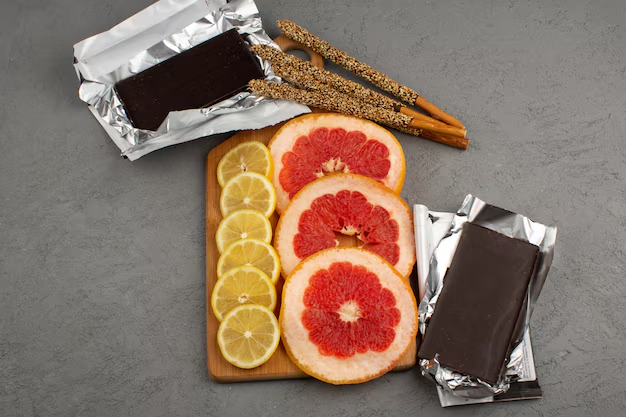Does Chocolate Last Longer in the Refrigerator? A Guide to Optimal Storage
Walking through the amazing world of chocolate, the allure can be irresistible — its rich aroma, glossy appearance, and melt-in-your-mouth texture. But once you've brought it home, how should you store it to keep it perfect? Specifically, how long can chocolate last in the refrigerator without losing its luster? This guide provides insights into the best practices for storing chocolate, aiming to prolong its shelf life while preserving its quality.
The Basics of Chocolate Shelf Life
When we think about chocolate, it's important to understand that not all types of this delectable treat are created equal. The shelf life of chocolate can be influenced by several factors:
- Type of Chocolate: Dark chocolate, with higher cacao content and less milk, generally lasts longer than milk chocolate or chocolate with additives. White chocolate, containing no cacao solids, has the shortest shelf life.
- Ingredients: Add-ins like nuts or fruit can spoil faster, impacting the overall shelf life.
- Storage Conditions: Temperature and humidity are critical. Chocolate stored at room temperature can sometimes last longer than when refrigerated, albeit under controlled environments.
Let’s delve into why refrigeration is commonly considered and whether it truly extends the life of chocolate.
Why Refrigerate Chocolate?
Good question! Refrigeration is often thought to extend the freshness of food by slowing down the growth of bacteria and mold. However, chocolate is a bit unique. Here's how refrigeration can impact chocolate storage:
Protection from Heat: Chocolate can melt at temperatures just above 68°F (20°C). Placing chocolate in the refrigerator can help prevent it from melting, especially in warmer climates.
Slowing Degradation: While refrigeration won't necessarily extend shelf life compared to ideal room-temperature storage, it can help prevent the fat and sugar in chocolate from degrading too quickly.
The Potential Downsides of Refrigerating Chocolate
Refrigerating chocolate has its caveats and may not always be the best course. Here are some potential downsides:
Blooming: One common issue when refrigerating chocolate is blooming. When chocolate is exposed to moisture (like fridge condensation), sugar bloom can occur, creating a whitish film on its surface. This affects appearance but not taste. Similarly, fat bloom occurs when chocolate undergoes rapid temperature changes.
Flavor Absorption: Chocolate has a tendency to absorb odors, so unless securely wrapped, it may take on flavors from other refrigerated foods.
Texture Changes: The temperature shift from refrigerator to room temperature can cause textural changes, potentially making chocolate grainy.
Optimizing Chocolate Storage in the Refrigerator
To keep your chocolate in peak condition, consider these storage tips:
- Airtight Containers: Store chocolate in airtight containers or fully wrapped in plastic to prevent moisture exposure and absorbtion of odors.
- Avoid Temperature Swings: Keep chocolate in the back of the fridge, where the temperature is most stable, to avoid blooming.
- Bring to Room Temperature: Before consuming, allow chocolate to reach room temperature gradually to ensure the texture is as intended.
Practical Tips for Storing Chocolate
Here’s a quick and practical breakdown on storing your chocolate in both room temperature and refrigerator conditions:
📌 Quick Tips for Chocolate Storage
| Condition | Recommendations |
|---|---|
| Room Temperature | ➡️ Store in a cool, dry place between 65-70°F (18-21°C). ➡️ Keep away from direct sunlight and strong odors. ➡️ For dark chocolate, a year or more is typical; milk/white chocolate lasts less. |
| Refrigerated | ➡️ Use airtight containers or double wrap in plastic. ➡️ Avoid frequent temperature changes. ➡️ Consider using only if room exceeds 70°F (21°C) or for chocolates with perishables. |
| With Perishables | ➡️ Follow manufacturer's storage guidelines, often needing refrigeration once opened. ➡️ Check for additives like nuts or fruits that may spoil faster. |
Exploring Alternatives and Related Subtopics
Beyond refrigeration and room temperature storage, understanding alternative methods can be beneficial.
Freezing Chocolate: With the proper steps, freezing can further extend the shelf life by several months. Just ensure a gradual thaw over 24 hours in the refrigerator before bringing to room temperature.
Seasonal Considerations: Post-holiday sales might tempt bulk buying. Assess the storage requirements for your chocolate bounty to retain flavor and texture.
Effect on Velvety Texture: Chocolate's mouthfeel is one of its treasured qualities, but this can be altered when stored improperly.
Key Takeaways
Choosing the right storage method for chocolate greatly depends on the environment and personal consumption habits. While the refrigerator can help prevent melting and prolong shelf life in overly warm conditions, room-temperature storage often maintains the optimal taste and texture when conditions permit.
- Store in a Stable Environment: Room temperature, airtight containers in a dark and dry place are generally ideal.
- Refrigeration with Caution: Consider when temperatures rise or if chocolate contains other perishables. Taking care to avoid blooming and odor absorption is essential.
- Flexibility: Adapt your storage depending on chocolate type and climate considerations.
In conclusion, proper storage not only extends the life of your chocolate but preserves the experience and enjoyment it offers. Remember, a little attention to storage details can make all the difference in your chocolate indulging moments!
